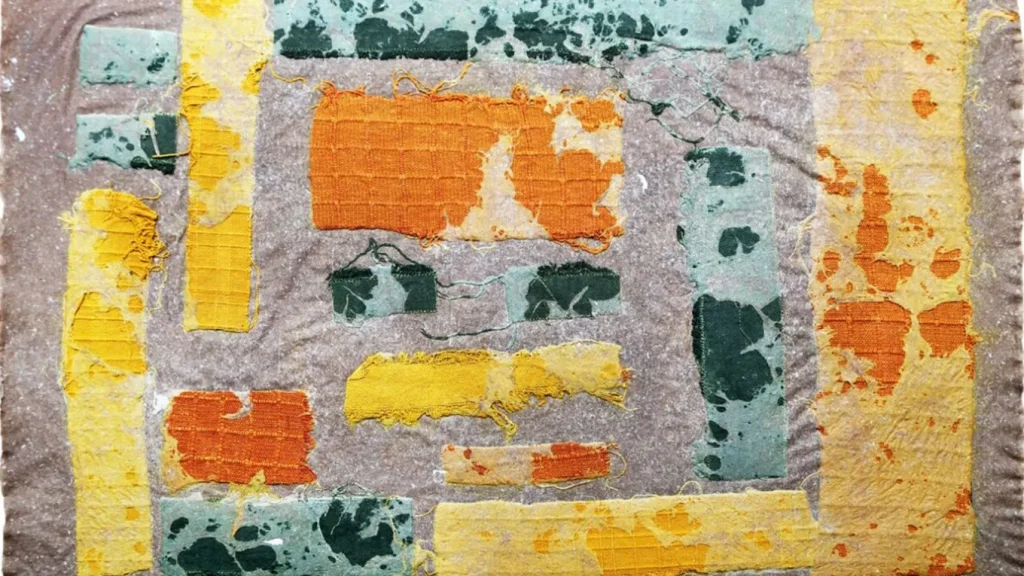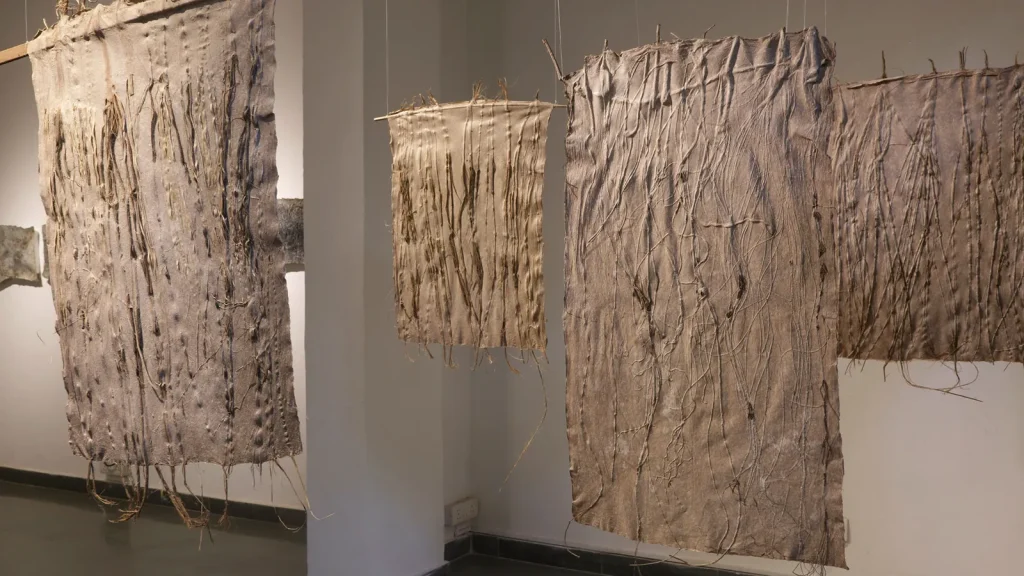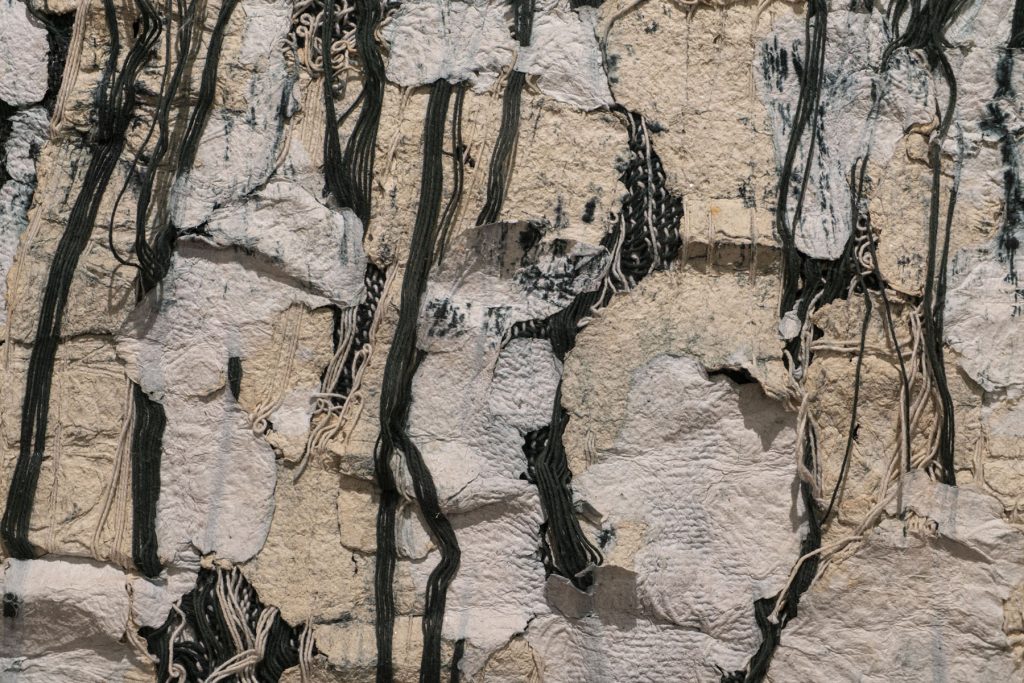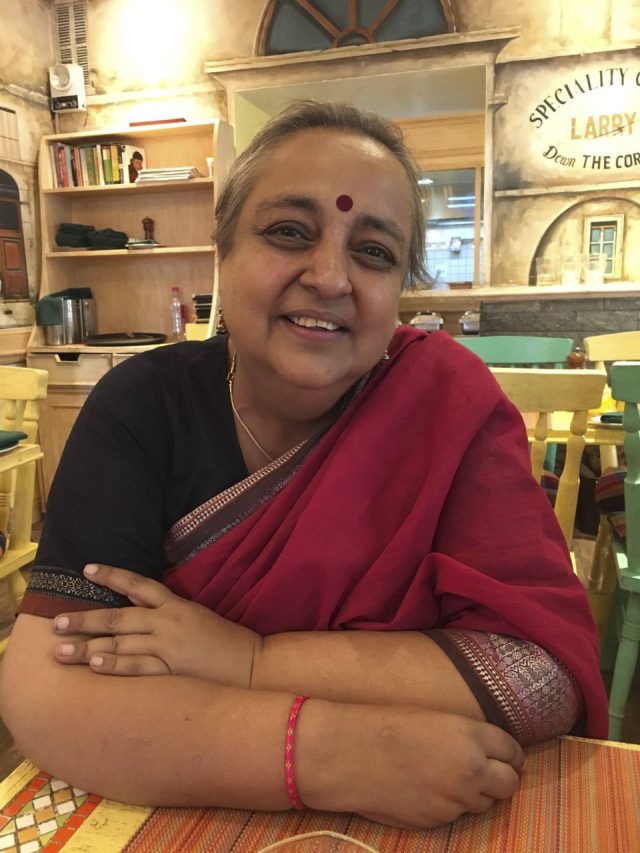Weaving is not simply putting thread together. Weaving is a complex tapestry of human emotions. And no artist could understand it better than Priya Ravish Mehra. Mehra was born in Najibabad, where she was fascinated by the art of ‘rafoogari’. She soon studied textiles and tapestry at Visva Bharati University, Shantiniketan, West Dean College, Sussex, and Royal College of Arts, London.

In May 2018, Priya Ravish Mehra organised a rafoogari workshop at the India International Centre. Within a week, she passed away, owing to her terminal cancer. Her work may seem simple and shine a light on the unacknowledged craft, but when seen through the lens of her ailment, the message behind her work is nothing short of uplifting.
Priya Ravish Mehra’s Weaving Style
Although she had garnered immense knowledge of textiles, she was still attracted to the practice of ‘rafoogari’ or darning, a style she had seen local artisans work on. Priya Ravish Mehra’s metaphorical oeuvre narrates the experience and process of healing. Rafoogari is not simply to piece the fabric back together, but to ensure that it would remain intact. Once the pieces amalgamate, there is undoubtedly an aberration – a representative of the highs and lows of human life. She attempts to bring visibility to the imperfect nature of a once ‘torn’ existence.

She believed in the Vedic concept of ‘Ṛta’. ‘Ṛta’ signifies the cosmic order and truth. When a fabric experiences a sudden violent rupture, darning is the best possible way to save and seldom beautify the cloth. Priya Ravish Mehra’s artwork does the same, embedding it with her truth, bringing an existential order to an otherwise destroyed textile. This indicates a symbiotic relationship between two different entities; a metaphor for healing wounds.

Priya Ravish Mehra gives voices to the sidelined and silenced. Through the use of discarded materials and rubble, she revives them with the threads of her past. Her pieces are a homage to nature, she has often used pieces of scrapped shawls, plants, natural fibres, leaves, and more, placing them onto paper pulp. Enthralled by the notion of symbiosis, her work is a testament to the ever-growing relationship between the natural and the man-made. It may also be seen as a collation of the existential and the transcendental.
Photo Courtesy – The Blue Blog






